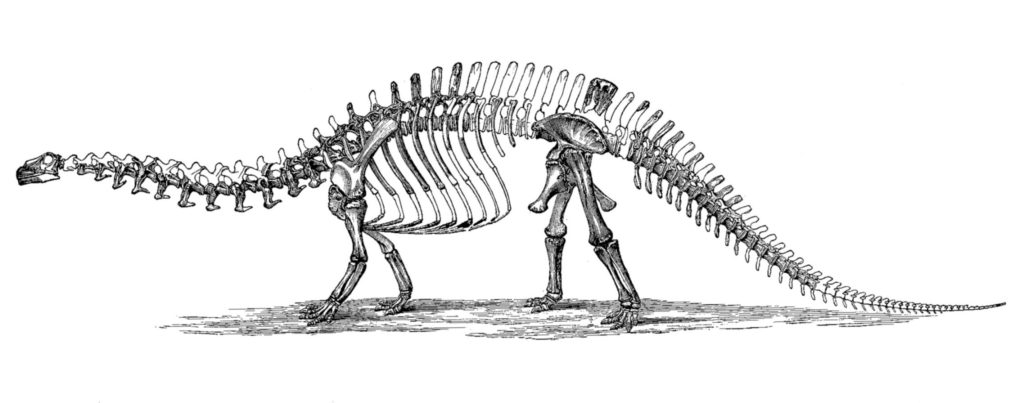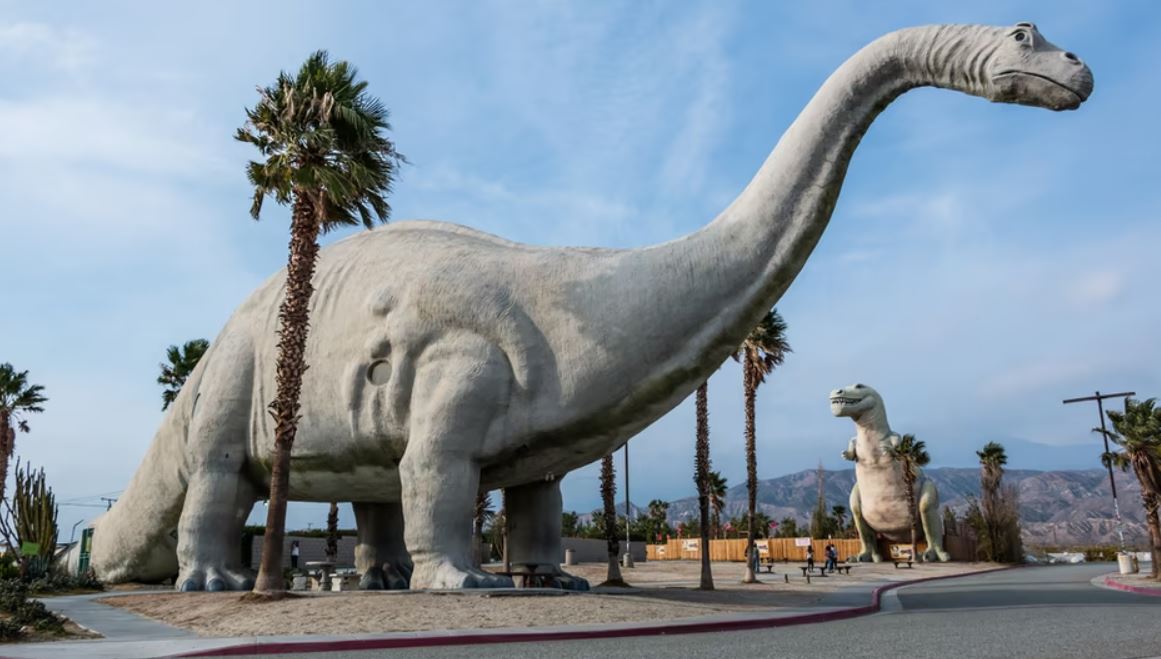Dive into a rich, illustrated exploration of Brontosaurus, a noteworthy dinosaur from the Jurassic era.
Key Characteristics of the Brontosaurus
Era: Late Jurassic
Timeline: Approximately 155 to 146.8 million years ago
Size: Around 22 meters (72 feet)
Mass: Roughly 15 tonnes (16.5 US tons / 33,069 lb.)
Dinosaur Category: Sauropod
Belongs to: Diplodocidae Family
Overview

Brontosaurus holds a significant place in the pantheon of dinosaurs, even though there was a period where its existence was under dispute (read further for details).
This gigantic creature was native to North America, specifically during the Late Jurassic period. It shared its habitat with herbivorous dinosaurs like Diplodocus and Stegosaurus, as well as menacing carnivores such as Allosaurus and Ceratosaurus.
What Is A Brontosaurus?

A Brontosaurus is a sauropod dinosaur that existed in what we now know as North America during the Late Jurassic period, roughly 150 million years ago.
The term Brontosaurus denotes a genus of dinosaur. As of 2020, scientists have identified three different Brontosaurus species: Brontosaurus excelsus, Brontosaurus yahnahpin, and Brontosaurus parvus.
These species were discovered in the Morrison Formation, a sedimentary rock layer predominantly located in Wyoming and Colorado, USA.
Brontosaurus was a member of the Diplodocidae family, which also includes dinosaurs like Apatosaurus, Diplodocus, Barosaruus, and Supersaurus. Its closest relative is believed to be Apatosaurus; for years, they were considered identical species.
Interpreting the Name Brontosaurus
The name Brontosaurus translates to ‘thunder lizard’.
Brontosaurus Appearance

Brontosaurus embodied the typical sauropod characteristics, boasting an enormous stature, elongated neck, petite head, and a long tail, all supported by four sturdy, tree-trunk-like legs.
It had lengthier ribs compared to other sauropods, resulting in a larger chest. Its tail resembled a whip and was more slender than those of similar dinosaurs.
As with all Diplodocids, Brontosaurus’ forelimbs were slightly shorter and thinner compared to its hind limbs. This resulted in the dinosaur’s back gently sloping towards its front shoulders.
It’s possible that the Brontosaurus used its powerful hind legs to rear up and access hard-to-reach foliage.
A long, curved thumb claw adorned each of its front ‘hands’, potentially used for defense or helping the dinosaur grasp trees while standing on its hind legs.
Each hind foot contained five toes, but only the three inner toes on each foot had claws.
The Scale of a Brontosaurus
Brontosaurus was believed to have measured up to 22 meters (72 feet) from head to tail, and weighed approximately 15 tonnes (16.5 US tons / 33,069 lb.).
This equates to nearly double the length (and about the same weight) as a typical bus, or roughly three times the weight of an average African bush elephant, the largest existing land animal!
The Timeline of Brontosaurus
Brontosaurus thrived during the Late Jurassic epoch, the final phase of the Jurassic Period. This period began around 163.5 million years ago and ended about 145 million years ago.
The earliest Brontosaurus specimens are estimated to be 155 million years old. It’s believed that this dinosaur species went extinct around 146.8 million years ago, which was before the conclusion of the Jurassic Period.
Uncovering the Brontosaurus
The Brontosaurus was unearthed in 1879 by esteemed American paleontologist Othniel Charles Marsh. The specimen was discovered at Como Bluff, a rocky ridge near the town of Medicine Bow in Wyoming.
Como Bluff forms part of the broader Morrison Formation, a layer of rock that was created during the Jurassic Period.
While numerous Brontosaurus specimens have been uncovered over the years, none included a skull. To this day, a Brontosaurus skull has yet to be found.
Is the Brontosaurus a Genuine Dinosaur?

Before the discovery of the Brontosaurus, a similar sauropod, known as the Apatosaurus, was already known to science.
When a new species is discovered, it is formally ‘described’ and given a name. If it is later discovered that the species had already been identified, the original name takes precedence.
Not long after Marsh described the Brontosaurus, some paleontologists questioned whether it was distinct enough from the Apatosaurus to warrant its own name. Consequently, the Brontosaurus was relegated to being an Apatosaurus specimen rather than a unique genus.
However, the name ‘Brontosaurus’ had already taken root in popular culture, and many people continued to use it.
In 2015, a fresh study reanalyzed the existing specimens. Researchers determined that the differences between the ‘Brontosaurus’ specimens and the Apatosaurus specimens were substantial enough to warrant separating the genera once again.
Hence, the Brontosaurus regained its status as a ‘real’ dinosaur. Nevertheless, this study remains contentious, and there’s a chance that the Brontosaurus might once again be reclassified as Apatosaurus in the future.
